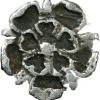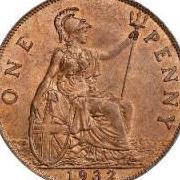|
|
The current range of books. Click the image above to see them on Amazon (printed and Kindle format). More info on coinpublications.com |
|
|
-
Content Count
7,620 -
Joined
-
Last visited
-
Days Won
92
Coinery last won the day on March 1
Coinery had the most liked content!
Community Reputation
926 ExcellentAbout Coinery
-
Rank
---

Profile Information
-
Gender
Male
-
It looks like such a perfect ‘bead’ relative to the condition of the donor coin that I’d personally be thinking it was an old ‘spatter’ of something unconnected with its minting…soldering, braising, weld, etc.?
-
Thanks, Peck, appreciate you commenting…not my natural playground at all, and all the more difficult to judge from a poor image. I’m looking forward to taking an in-hand photo!
-
Firstly, can I ask what you think the reverse grade of this coin might be (Sellers pictures, I haven’t seen it in-hand, yet)? The obverse looks a clear unc to me, but the lighting/lustre reflections (or not) on the reverse are making me wonder whether I might have to downgrade that expectation overall? You’ll likely have made thousands more predictions of grade from seller photos than I have, so I’d really appreciate your insights. Oh, and secondly, I don’t suppose anyone recognises it for a bit of provenance, perchance? The reverse, with its die-crack and ‘straight-edge’ toning at the second N of penny, through to the ship, is reasonably distinctive.
-
Why would they ‘detail’ a die-crack? Is that standard practice, or a crazy one off?
-
Ah, yes, I see what you mean. It’s turned into a very interesting read
-
Wouldn’t we have to take the Julian Calendar into account, which starts a new year on 25th March?
-
Reminds us that we’ve come a long, long, way since then…I think? 🤔
-
Ah, just got a fix…it looks like there’s been some updates or other? If you’ve got a tab opened that’s displaying correctly, or click on the home link or pre-dec. link on the broken page, and then re-add it to your home-screen, everything should work as normal…hopefully
-
This is happening on my mobile! The strangest thing is if I use one of my old pre-dec. opened tabs and refresh it, it refreshes as normal, whereas clicking on my shortcut I get this:
-
Anyone else having issues with the forum uploading?
-
Interestingly there’s an image on the other thread that makes me see a three for the first time, and a clear rear serif of a four! Here’s a proposal…what about an original three, with a four inserted the following year, BUT it broke up during the insertion (bits in the red circle), making the die irreparable/useless until the next useable digit came along to cover up the mess, which could only be an eight or a nine?
-
Yes, that’s the diagonal I was referring to. You know what, that vertical line is far too straight in your example to be anything connected with the ‘curved’ numbers. Has anyone ever considered it might be a four, and that the remaining bottom loop and part serif is nothing other than a poor repair of the eight with an old, possibly broken punch? I’m sure you’ve all been over it a million times already. I guess it’s going to sit on the unidentified variety pile for some considerable time, maybe even forever?
-
So what do they do, then, with the old digit ‘hole’ left on the old die, before striking in a new digit? With hammered coins the old digit is just crudely overlaid as best as is able. Now, the reason I ask is because, according to the lighting, I see digits at three distinct depths, the 8 at the intermediate (middle) depth, a higher (deeper on the die) bottom section of a three (but having the wrong serif when briefly looking at other 1853s), and lower (shallow on the die) diagonal stroke, extending out of the eight, not correlating with very much, except maybe a seven? Was there ever a satisfactory outcome to this overdate or has it remained a mystery?
-

Elizabeth Bell Halfgroat with pellets over mark of value II
Coinery replied to Coinery's topic in British Hammered
Yes, a different reverse die, mine’s the only reverse die of its kind I’ve found so far, with that double ring of pellets around the left half of the coin. By stable mate, I meant that the two coins were sold together in the same lot at the Wilkinson sale. I wasn’t paying attention, I thought both the tickets you supplied with the coin were yours. It wasn’t until this morning I realised one of them was W.W’s ticket -

Elizabeth Bell Halfgroat with pellets over mark of value II
Coinery replied to Coinery's topic in British Hammered
And finally this absolute beaut., which is clearly the best example to-date, bought for around £400 in ‘21, making it an absolute snip in consideration of Chris Comber’s ‘crustacean’ coin, which drew bids to take it over £500.
 Coinpublications.com
Coinpublications.com














